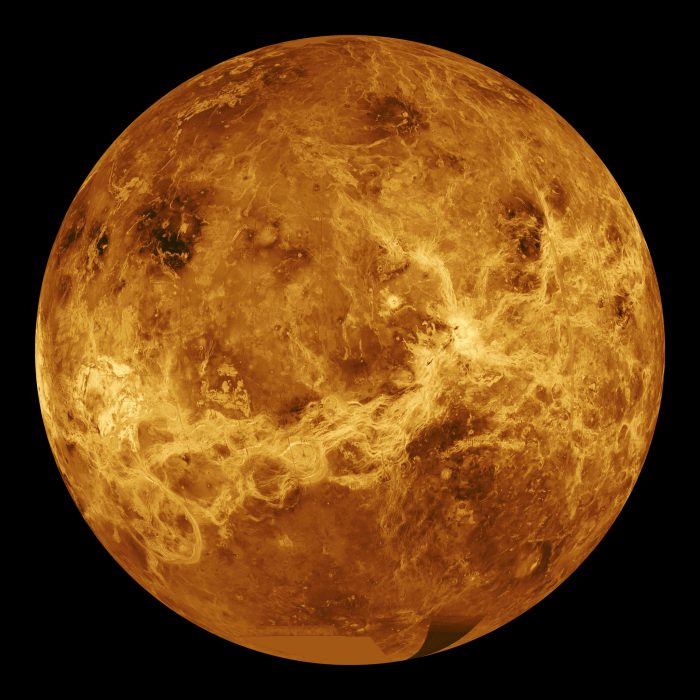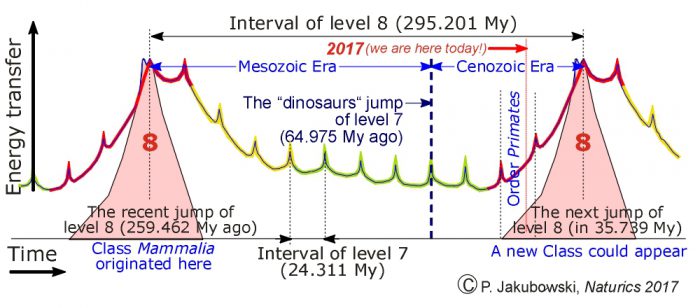Three years ago, Adeene Denton wrote the most compact and informative article: „The Venus controversy“, I ever read about Venus.
At the very beginning Adeene Denton wrote:
„What happens when scientists fundamentally disagree about planetary bodies? It happens more often than you might think. These disagreements are often fundamental: How did the Moon get its craters? Could Mars have sustained life? The controversies of our field often answer themselves when more data is added, but sometimes more data is a long time coming. Often, more data leaves us more confused than before! In the case of Venus, the entire history of the planet has been up for debate for about 40 years, ever since the first Soviet probes transmitted images back from the surface. In particular, planetary scientists are fascinated by the parallel development — and divergence — of Venus and Earth, the two most similar rocky planets. … Both planets have similar masses, sizes, and densities—Venus is just a little closer to the Sun. However, despite its numerous bulk geologic similarities with Earth, Venus has a surface unlike anything terrestrial geologists have ever seen.

We learned from the Soviet Venera landers in the 1970s and the Magellan orbiter in the 1990s that Venus’ craters, volcanoes, and topography are all dramatically different than those found on Earth. … Only the Earth’s ocean floor is as poorly imaged as Venus, with less than 10 percent of it mapped in detail. Venus, shrouded in clouds, and the ocean floor, insulated by water, remain the few places in the Solar System that are currently out of our technological reach.“
Further, Adeene Denton describes the Venus‘ volcanism and impact craters.
„Venus also doesn’t do impact craters the same way the Earth or the Moon do. Like volcanoes, impact craters are distributed nearly randomly on its surface. What’s weirder is that almost all of them (85 percent) appear pristine, apparently unmodified by the massive amounts of volcanic activity recorded in the surface features around them. Thus, these craters likely formed after most of the volcanic activity on the surface died down. There are also not very many impact craters, which suggests a youthful surface (on average, 200 to 700 million years old), unlike the ancient surfaces of the Moon, Mercury, and Mars. What could make a young surface, covered with volcanoes and pristine craters? Some scientists have suggested that Venus’ old impact craters were erased by a global volcanic resurfacing event, a massive catastrophe that left it with no visible impacts craters at all. Other scientists disagree.“
And she tries to explain this controversy in that way.
„For scientists discussing Venusian history, there are two extreme points of view: catastrophic and steady-state. These terms refer to the primary difference between the two models, which is how long the resurfacing of Venus actually took. The catastrophic resurfacing model suggests that planetary resurfacing on Venus occurred through infrequent, planet-wide volcanic events, large enough to bury all earlier material. In other words, resurfacing was a near-instantaneous change to Venus relative to the slow flow of geologic time. Steady-state, on the other hand, implies numerous smaller, discrete processes, stretched out across time. For Venus, the steady-state model posits more frequent resurfacing episodes, more similar to the pace of volcanism on Earth, that obliterate older craters at the local scale over much longer timescales. If the location and timing of the volcanism work out, a slower pace might still yield a young age for the surface overall.“
And she concludes.
„The catastrophic resurfacing model, meanwhile, effectively stops itself once the mantle runs out of excess heat, which is a primary reason that this model has become the currently favored scenario in the scientific community. In the years since Magellan, growing consensus suggests that the surface of Venus that we see today was indeed the result of a dramatic outburst of volcanism, which in turn ‚shut off‘ volcanism going forward. We need another mission. Will we one day truly understand how Venus' resurfacing occurred? Only time (and federal funding) will tell.“
Adeene Denton is young. Her PhD is expected in Spring 2022 (at the Purdue University). Therefore, her article is still completely objective, presenting the actual state of our traditional knowledge about Venus. So, my critique here below concerns not the author, but the content of this traditional knowledge.
Let me repeat the last question: „Will we one day truly understand how Venus' resurfacing occurred?“ My answer is already today: Yes, we can understand it. But we have to give up the grotesque effort to try to explain the Venus‘ resurfacing by considering the Venus as an isolated planet, or even an isolated cosmic body. Like our Earth, Venus is a member of our huge Cosmic Hierarchy of our Solar System. And unlike Earth, Venus is even located in the unique point of our Solar System, namely in its center of mass. These are two main points, where the traditional Astrophysics view is critically different from our Unified-Science point of view.
Firstly, being a member of our Cosmic Hierarchy, Venus experiences the same periods of the cosmic energy transfer to its surface as all other members of this hierarchy do. The two recent largest such energy exchanges (or cosmic collisions of the level 8 of our Cosmic Hierarchy) have occurred 555 and 259 million years ago. And secondly, as standing exactly in the center of mass of the entire Solar System, Venus always experiences the most collisions of all members of our Solar System.
It is exactly what the Magellan spacecraft has discovered. The cosmic impacts of level 8 were so powerful that they remelted the big part of Venus‘ surface and even of her interior. The extremal volcanism followed each of those two periods over about 25 to 75 million years. The corresponding period around the second of those events, occurring simultaneously on Earth 259.4 million years ago, has been schematically presented on the diagram below.

Every one of the level-8 impacts tunneled the entire body of Venus and produced basalt flood covering wide expanses of the surface at the antipode of the impact place, leaving similar features such as the Deccan Traps on Earth (compare Wikipedia: „Geology of Venus“).
Every one of the following events of level 7 of our Cosmic Hierarchy, with approximately one hundred times lower energy, occurring every 24.3 million years, has left on the renewed Venus‘ surface the pristine impact craters so strongly surprising the Venus’ researchers.
Also the lacking magnetism of Venus is simply explainable in our Universal Philosophy, because due to the Venus‘ position in the center of mass, Venus cannot rotate in relation to the primordial cosmic cloud from which the Proto-Solar System, and later our present Solar System has been formed. And without rotation no magnetic field can be created.